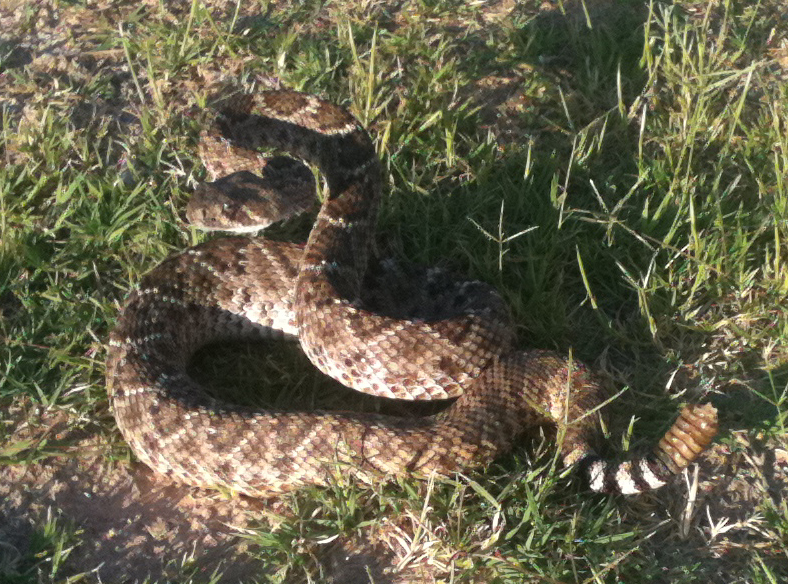 Crotalus atrox, more commonly known as the Western Diamondback Rattlesnake, is one of the many animals that call the Chihuahuan desert home. I came upon this medium-sized 3-foot long specimen while out walking last week. It was evening and he was stretched out on the sand, soaking up the last of the warmth before the cool desert night set in.
Crotalus atrox, more commonly known as the Western Diamondback Rattlesnake, is one of the many animals that call the Chihuahuan desert home. I came upon this medium-sized 3-foot long specimen while out walking last week. It was evening and he was stretched out on the sand, soaking up the last of the warmth before the cool desert night set in.
Normally, unless I’m hunting them for food and skin, I’ll just leave rattlers well enough alone. Unfortunately, that wasn’t an option here: this guy was very close to an area with human traffic. He had to be dispatched.
Rattlesnakes are frequently hunted for both their meat and their skin. Properly prepared, rattlesnake meat is savory and tender. Many people inadvertently overcook the meat however, and it becomes tough and rubbery. Either fried or sautéed in butter, it doesn’t take much to cook it. The lower part of the meat closer to the ribs and the snake’s belly is thin, while the upper part close to the spine is thick. There is little danger in slightly undercooking rattlesnake, and I recommend preparing it so that the thin portion of the meat is medium-well, leaving the inner portion of the thicker side rare. This ensures that the meat is still tender and flavorful.

